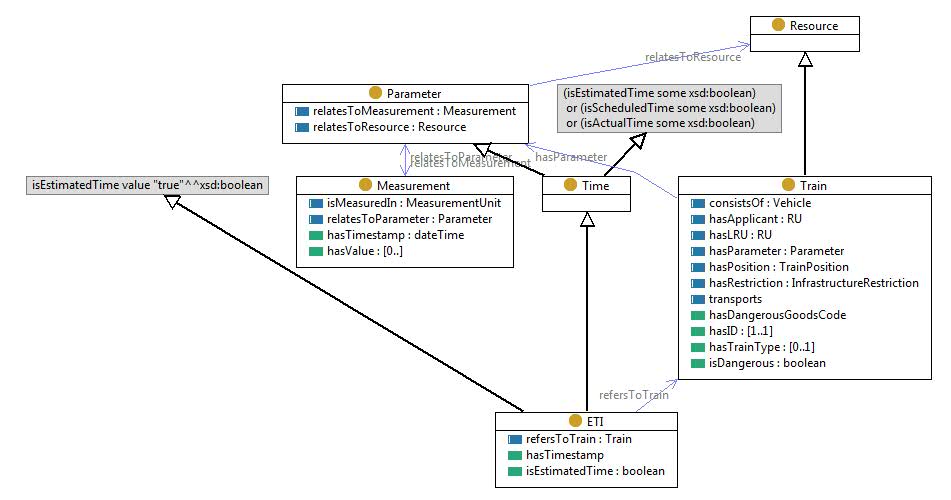rdfs:comment
-
 |
The train traffic is scheduled and controlled based on a precise time (including the time zone). The relevant types of time for the railway traffic are the scheduled time (given by the valid timetable or path), the actual time (given by the real-time traffic), and the estimated time (forecasted for the nearest future). Each of these types comes in the form of a departure time, arrival time, interchange time and others.
Especially relevant types of time for rail are the Estimated Time of Interchange (ETI) and Estimated Time of Arrival (ETA) which are a sort of predictive information (and are not available by every IM). RNE TIS includes convoluted algorithms to calculate the ETI/ETA from the current situation in the rail traffic.
ETI/ETA is closely bound to the service providers and other stakeholders which exploit this information.
Relationships:
• The RU gets the ETI/ETA from the IM (or from RNE).
• The RU provides the information to its customers, i.e. to the LSP, forwarder, or end customer.
• The information defines a time (estimated) and a position (location) assigned to a specific train.
• The different types of time can be classified in estimated, scheduled and actual times (e.g., Scheduled Time of Arrival, Expected Time of Arrival and Actual Time of Arrival).
|
|

